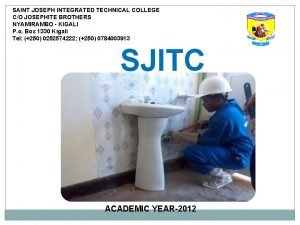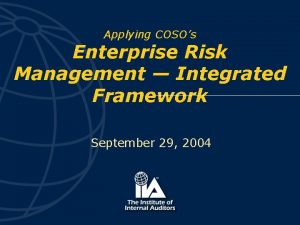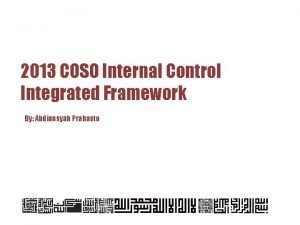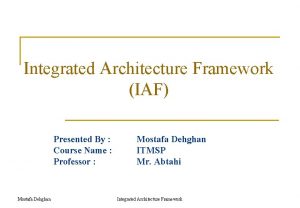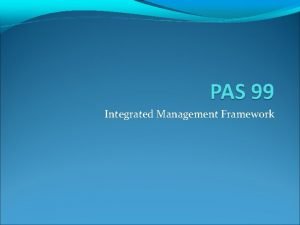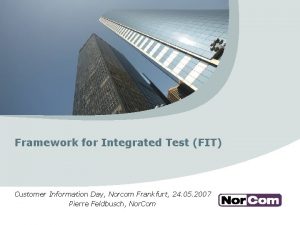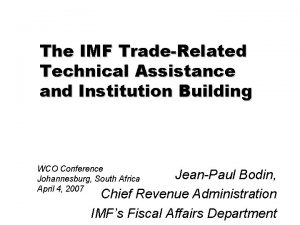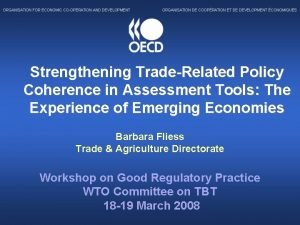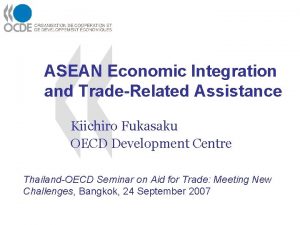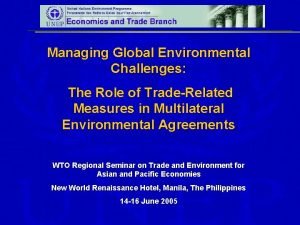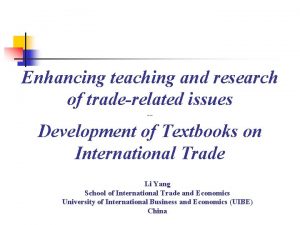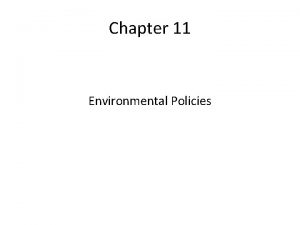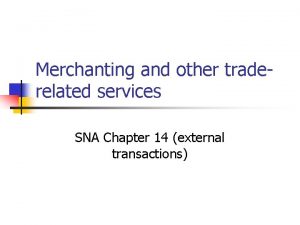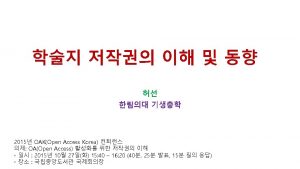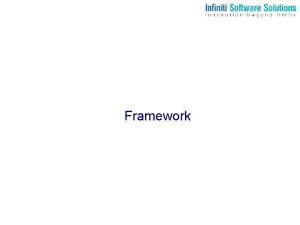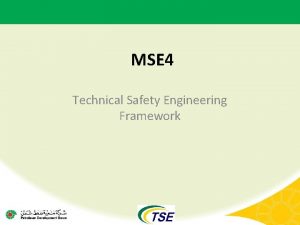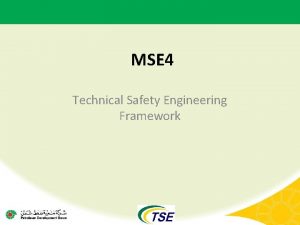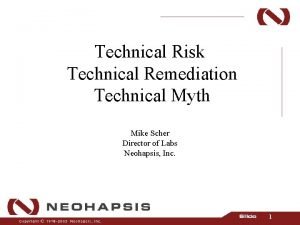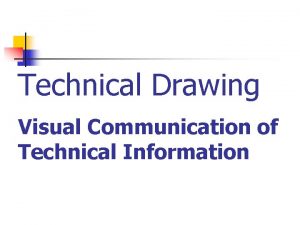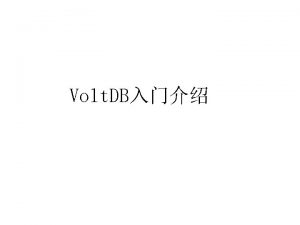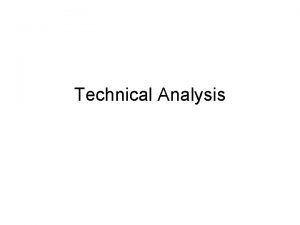AITIC The Integrated Framework IF for Traderelated Technical























- Slides: 23

AITIC The Integrated Framework (IF) for Trade-related Technical Assistance for LDCs

Structure of the Presentation 2. Why is the IF relevant to all developing countries? Objectives of the IF 3. State of Play of the Reform: from the 1. IF to the EIF 4. Implementation of the IF at country level

1. Why is the IF relevant to all Developing Countries? n Aid for Trade (AFT): New additional funds! n AFT must use the existing structures n LDCs have the IF n Non-LDCs do not have a ready-to-use structure for AFT

The EIF, an Asset for LDCs in Implementing AFT… n LDCs should use the structures… …and the assets of the IF/EIF

…And a Source of Inspiration for non-LDCs n The IF: A model for non-LDCs to implement AFT?

2. Objectives of the IF n To mainstream trade into national development plans n To assist in the coordinated delivery of trade-related technical assistance.

3. From the IF to the EIF The Old IF (1997 -2000)

The Revamped IF (2001 -2007) Partnership between six Agencies, LDCs and Donors

The Revamped IFKey Elements n Diagnostic Trade Integration Study (DTIS) n Two project funding windows n Country-level structure and Geneva- based IF governance

From the IF to the EIF Evaluations: A deeper reform of the IF n December 2005: Decision to enhance the IF at the Hong Kong Ministerial Conference n July 2006: Endorsement of the task force Recommendations n Until today: Transition to implement the guidelines /fine-tune the governance structure n Second quarter 2008: Enhanced IF launch? n

The IF Persistent Shortcomings 1. Resources 2. Country leadership 3. Coordination 4. Trade Mainstreaming

Remedies of the EIF 1. USD 170 million raised for the EIF =70 % of the targeted USD 250 million 2. Strengthening and clarification of the IF country-level architecture for increased LDCs leadership

Remedies of the EIF(cont’ed) 3. Better donor response thanks to the donor facilitator + Interministerial coordination + Stakeholder process 4. Incentives + Strengthening of national structures

Consolidation of the IF Architecture 1) At the global level: n IF Board: day-to-day business n Geneva-based IF Executive Secretariat n Regionally-based IF Trust Fund managed by UNOPS

Consolidation of the IF Architecture 2) At the local level: n National Implementation Unit: small team of experts to back the Focal Point n More intermediaries: e. g. interministerial committee n Appraisal Committees differentiated according to the type of projects

4. IF Implementation in LDCs : The 4 Steps

Step 1: Request Country request examined and aproved by the IF governing bodies

Step 2: Pre-diagnostic Phase Establishing the local IF structure + World Bank Preparatory Mission

Step 3: Diagnosis The DTIS and the Action Matrix are prepared and validated by national stakeholders

Step 4: The Implementation Plan is finalised, and Tier 2 projects are prepared and launched

DTIS Revision : A new Cycle

Conclusions n n IF: EIF: n Monitoring and Evaluation? n What can be done by non-LDCs?

Conclusions n Fill in the questionnaire of the OECD/WTO on AFT n Financial/technical assistance to set up the National AFT committee?
 Saint joseph integrated technical college
Saint joseph integrated technical college Enterprise risk management integrated framework
Enterprise risk management integrated framework Coso 2013 principles and points of focus
Coso 2013 principles and points of focus Iaf architecture
Iaf architecture Integrated management framework
Integrated management framework Framework for integrated test
Framework for integrated test Iaf framework
Iaf framework Vad är hsil
Vad är hsil Jag har gått inunder stjärnor text
Jag har gått inunder stjärnor text Tack för att ni lyssnade bild
Tack för att ni lyssnade bild Strategi för svensk viltförvaltning
Strategi för svensk viltförvaltning Vad är verksamhetsanalys
Vad är verksamhetsanalys Tack för att ni har lyssnat
Tack för att ni har lyssnat Läkarutlåtande för livränta
Läkarutlåtande för livränta Klassificeringsstruktur för kommunala verksamheter
Klassificeringsstruktur för kommunala verksamheter Vad står k.r.å.k.a.n för
Vad står k.r.å.k.a.n för Centrum för kunskap och säkerhet
Centrum för kunskap och säkerhet Inköpsprocessen steg för steg
Inköpsprocessen steg för steg Påbyggnader för flakfordon
Påbyggnader för flakfordon Anatomi organ reproduksi
Anatomi organ reproduksi Egg för emanuel
Egg för emanuel Tack för att ni har lyssnat
Tack för att ni har lyssnat Varians
Varians Tidböcker
Tidböcker
